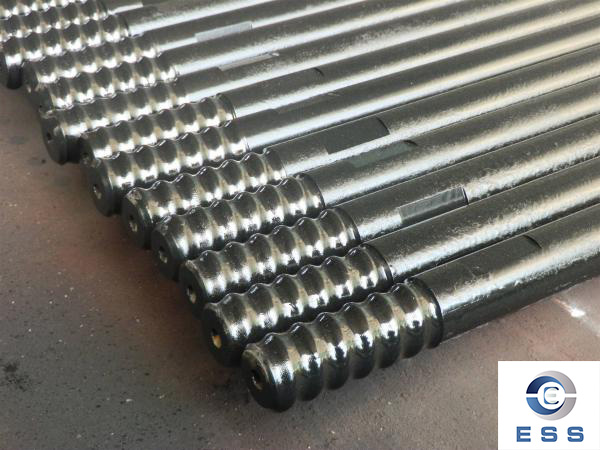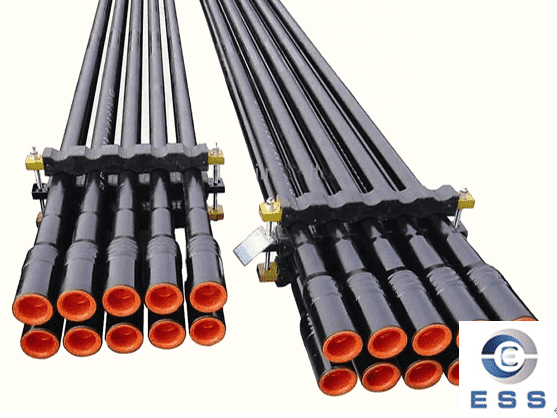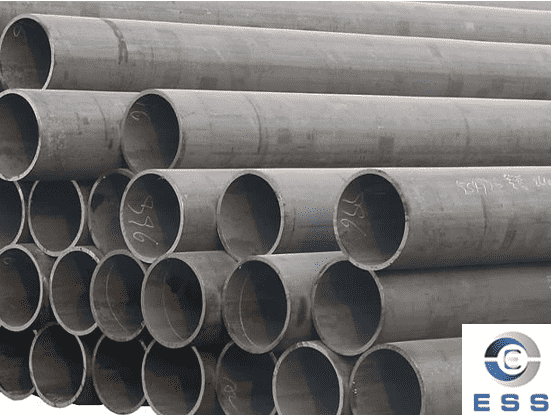The difference between
drill pipe and drill collar

The concept of drill pipe and drill collar
The drill pipe refers to the tool used to connect the drill bit and the upper part of the drilling rig in oil drilling. It is an important component for sending the drill bit into the wellhead and realizing a series of drilling operations. The drill collar is a special tool in the drill pipe, which is a tubular tool used to transmit torque and thrust to rotate the drill bit. Effectively realizes the drilling operation.
The relationship between drill pipe and drill collar
The drill pipe and drill collar are inseparable. The drill pipe is connected to the drill bit through the drill collar, and it must be pushed down while rotating to achieve drilling of the rock formation. The drill collar is usually responsible for torque transmission and downward thrust, so it is the most important and durable part of the drill pipe. The material and design of the drill collar must be able to withstand huge forces and high-speed rotation to ensure the smooth progress of drilling work.
The difference between drill pipe and drill collar
Different materials
Drill pipe structure The drill pipe is made of seamless pipe, with a wall thickness of 9-11mm. It has good strength and hardness, can withstand high pressure and heavy load, and consists of two parts: the drill pipe body and the drill pipe joint. The pipe body and the joint are welded together by friction welding. The rolled or forged AISI4145H chromium-molybdenum alloy steel is made, and the chemical composition and trace element content are effectively controlled. The hardness and strength of this material are much lower, and it is not suitable for high pressure and heavy load use.
Different shapes
The shape of the drill pipe is usually cylindrical and longer than the drill collar because it needs to withstand greater loads and pressure. The drill collar is conical, with a gradually decreasing diameter, which can better adapt to the cliffs of underground rocks and achieve better penetration. Due to the smaller diameter of the drill collar, its resistance is also smaller than that of the drill pipe, which can better control the depth of drilling and reverse circulation flow.
Different places
Drill pipes are mainly used for deep hole drilling, and are also used for installing underground communication cables and water pipes, as well as rod pushing and filling work. Drill collars are usually used for shallow hole drilling, such as foundation inspection, anchoring and blasting operations. Drill collars can be used for directional drilling, and because of their low resistance, they can be used to replace drill pipes for technical drilling, such as water and soil quality testing and environmental geological surveys.
Different functions
The drill pipe is a drilling tool that connects the drill bit to the drilling rig through a bearing for rotation and downward thrust, and is an indispensable part of the entire drilling process. The main function of the drill pipe is to transmit the rotational power and propulsion force of the drill bit. It can also be used to recover drill cuttings and measure well depth. The drill pipe is generally composed of multiple sections of pipes, which are connected by threads. Drill pipes of different lengths can be selected according to the well depth and drill bit. The drill collar is a tubular tool, which is mainly used to keep the wellbore at a certain diameter and prevent the wellbore wall from collapsing during the drilling process. The drill collar is also composed of multiple sections of pipes, which are connected by threads. The difference between the drill collar and the drill pipe is that the drill collar is only used for propulsion and will not rotate in the wellbore. When using the drill collar, the drill bit needs to be fixed to the lower end of the drill collar drill pipe, and the drill collar and the drill bit are pushed down into the ground by moving the drilling rig up and down, while keeping the wellbore at a stable diameter and preventing the wellbore wall from collapsing.
How to use drill pipe and drill collar and precautions
1. How to use drill pipe
(1) When assembling drill pipe, attention must be paid to the connection of threads to ensure that the connection is firm and not loose to avoid accidents;
(2) The drill pipe should be inspected and maintained regularly to ensure its performance and safety;
(3) During the drilling process, the processing quality and use conditions of the drill pipe have a very important impact on the drilling effect;
(4) When the well wall becomes soft or the wellbore diameter becomes larger, it should be considered to replace the drill pipe with a longer length.
2. How to use drill collar
(1) When using drill collars, it is necessary to ensure that the well depth is consistent with the correctly selected drill collar length, otherwise it will affect the drilling effect;
(2) When fixing the drill bit, attention must be paid to its firmness to avoid the danger of the drill bit falling off;
(3) The reasonable use of drill collars can keep the wellbore diameter and prevent the wellbore wall from collapsing;
(4) In the event of stuck drill or hole, timely measures should be taken to avoid breaking the drill pipe or causing the wellhead to collapse.
In summary, drill pipes and drill collars are both essential tools in drilling operations, but they are different in material, shape, location, function and usage. During use, it is necessary to strictly follow the regulations and select the right tools to ensure the safety and efficiency of the drilling process.













 Eastern Steel Manufacturing Co.,Ltd not only improve product production and sales services, but also provide additional value-added services. As long as you need, we can complete your specific needs together.
Eastern Steel Manufacturing Co.,Ltd not only improve product production and sales services, but also provide additional value-added services. As long as you need, we can complete your specific needs together.










